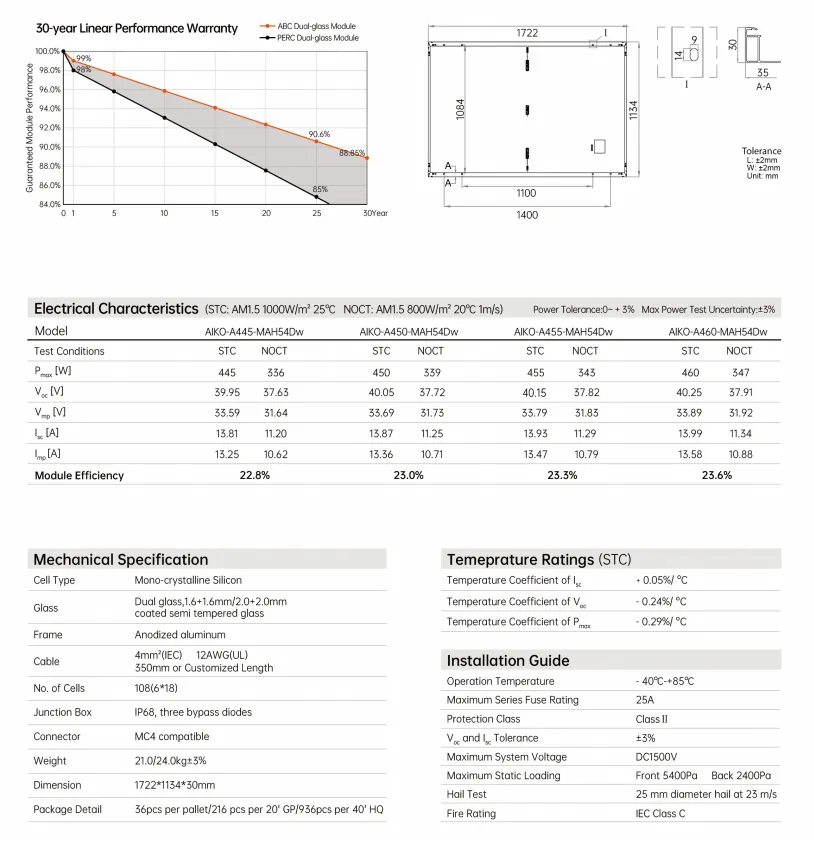monofacial vs bifacial
Monofacial vs Bifacial Solar Panels Understanding the Differences and Benefits
In the rapidly growing field of renewable energy, solar power has emerged as one of the most viable solutions for sustainable energy production. Among the various technologies within this sector, solar panels play a pivotal role. The two main types of solar panels may be classified as monofacial and bifacial. While both types serve the primary function of converting sunlight into electricity, they have distinct differences in design, efficiency, and application.
Monofacial Solar Panels
Monofacial solar panels are the traditional type of solar panel that has been in use for many years. These panels collect sunlight from one side—the front—where the photovoltaic cells are located. The back of the panel is typically covered with a protective layer, often made of aluminum or glass, but it does not contribute to energy generation. The efficiency of monofacial panels has improved over the years, reaching conversion rates of 15% to 22%, depending on the technology used and the quality of the materials.
Monofacial panels are widely known for their durability and reliability. They are relatively easy to install and maintain, making them a common choice for residential installations. Furthermore, these panels can be effectively used in various settings, ranging from rooftops to large-scale solar farms. However, their limitation lies in their inability to utilize reflected sunlight from the ground or surrounding environment, which could diminish their overall energy output.
Bifacial Solar Panels
In contrast, bifacial solar panels are designed to capture sunlight from both the front and the rear sides. This design allows them to take advantage of reflected sunlight, such as sunlight bouncing off the ground, rooftops, or nearby structures. As a result, bifacial panels often have higher energy production compared to their monofacial counterparts, with efficiencies ranging from 20% to 25% or more.
The increase in energy yield is one of the main advantages of bifacial panels. Their dual-sided design means they can generate power even in environments with high albedo, such as snowy or sandy areas where sunlight reflects significantly. This can translate into a higher return on investment, making bifacial panels particularly appealing for large-scale installations.
monofacial vs bifacial

However, bifacial panels also come with some challenges. They generally require more careful installation, particularly when it comes to positioning and mounting to ensure optimal sunlight exposure on both sides. Additionally, the cost of bifacial solar panels tends to be higher than that of monofacial panels due to the technology and materials involved in their production.
Comparative Considerations
When deciding between monofacial and bifacial solar panels, several factors should be taken into consideration
1. Energy Needs For small-scale, residential installations with limited roof space, monofacial panels may be sufficient. However, for larger installations or areas with high solar reflectivity, the additional energy yield from bifacial panels can be beneficial.
2. Installation Environment The surrounding environment plays a significant role in the effectiveness of bifacial panels. Those installed in areas with reflective surfaces, such as white rooftops, pools, or light-colored ground materials, may see substantial performance benefits.
3. Cost vs. Benefit While bifacial panels may incur higher upfront costs, the enhanced efficiency may lead to lower Levelized Cost of Energy (LCOE) over time, making them a more cost-effective option in the long term for certain applications.
4. Durability and Lifespan Both types of panels are generally durable, but the choice may depend on other factors such as warranty offerings and the reputation of manufacturers.
In conclusion, the choice between monofacial and bifacial solar panels should be based on a careful analysis of individual energy needs, budget constraints, and the specific installation environment. Both technologies have their own merits and can effectively contribute to a sustainable energy future. As solar technology continues to advance, understanding the nuances between these panel types can empower consumers and businesses to make the best decisions for their energy requirements. Ultimately, the goal remains the same harnessing the sun's energy to create a cleaner and more sustainable planet.
-
Unlocking Energy Freedom with the Off Grid Solar InverterNewsJun.06,2025
-
Unlock More Solar Power with a High-Efficiency Bifacial Solar PanelNewsJun.06,2025
-
Power Your Future with High-Efficiency Monocrystalline Solar PanelsNewsJun.06,2025
-
Next-Gen Solar Power Starts with Micro Solar InvertersNewsJun.06,2025
-
Harnessing Peak Efficiency with the On Grid Solar InverterNewsJun.06,2025
-
Discover Unmatched Efficiency with the Latest String Solar InverterNewsJun.06,2025







